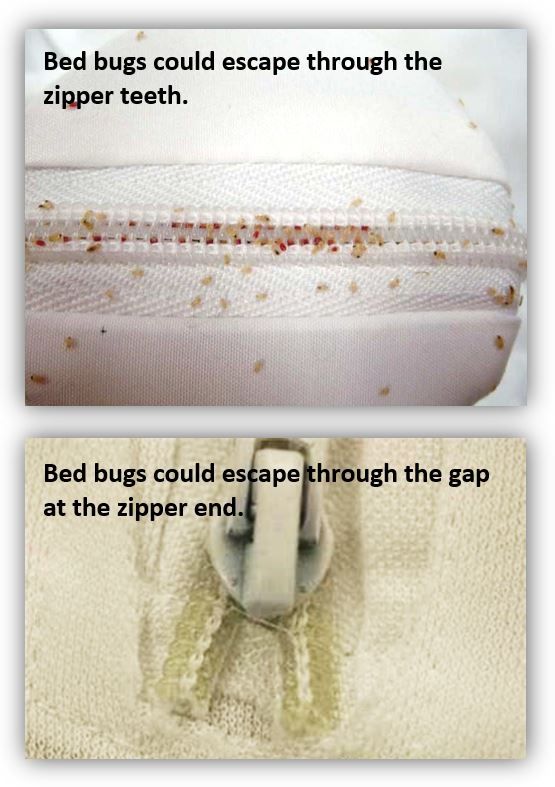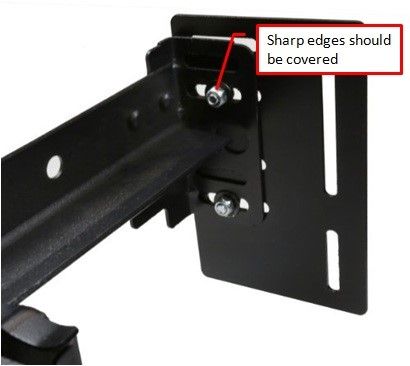Mattress Encasements for Bed Bugs
Bed bugs are often found in the sleeping area, especially in the mattress and box springs. A special sealed cover, called an encasement, can help control and prevent bed bugs in these areas.
How Encasements Work
The encasements cover the entire mattress and box spring. Once the encasements are sealed, any bed bugs inside the mattress or hiding in the bed springs cannot escape or feed, and they will eventually die. This helps to control any existing infestation.
Encasements are also useful in preventing a bed bug infestation from starting. Bed bugs like to hide inside of mattresses, in the mattress seams, and especially in the cracks and crevices on the box springs. Once the mattress and box springs are sealed inside encasements, bed bugs don’t have anywhere to hide.
Choosing an Encasement
There are many mattress covers and encasements available, but most will not work against bed bugs. Even some that are advertised as "bed bug proof" might not be correctly designed.
In order to work well against bed bugs, the encasement must have the following features:
- Fabric must be bite-proof to prevent the bugs from feeding through the material.
- Encasements must cover the entire mattress/box spring.
- The encasement must seal tightly with no openings, gaps, or tears that bed bugs might escape through.
- The zipper must have very small teeth that are close together to prevent even tiny, immature bugs from weaving in between the zipper teeth and escaping.
- The zipper must seal completely at the end-stop so that there are no gaps where bed bugs could escape.
Two well known brands, Protect-A Bed and Mattress Safe, include all the features needed to ensure the encasement is bed bug proof. These products can be purchased at several locations in Alaska, or can be purchased online.

Chemically Treated Covers
There are some mattress covers currently being sold that are treated with pesticides, which claim to kill or repel bed bugs. These covers do not effectively kill bed bugs or eliminate infestations, but they do expose sleepers to insecticides. For this reason, chemically treated mattress covers are not recommended. Well-sealed encasements will be more effective and safer.
How to Install and Maintain an Encasement
Before installing an encasement, remove as many bed bugs and eggs as possible. Look for bed bugs and eggs in the wooden framework, coils, padding, piping, and seams on the mattress, bed frame, and box springs. Use a stiff brush to scrub mattress seams, stitching, and other areas where bugs were found. Wipe up any bed bugs with a damp paper towel or rag. Crush the bugs inside the paper towel, and seal it up in a plastic bag before throwing it away.
You can also use a vacuum to remove bed bugs. You will need to take steps to make sure you don't spread the bed bug infestation to your vacuum!
- Make sure your vacuum has a disposable bag. You will not be able to get all the bed bugs and eggs out of a bagless type vacuum.
- Each time after you finish vacuuming, remove the vacuum bag and seal it up airtight inside a plastic garbage bag. Dispose of the vacuum bag in an outside garbage can.
- You will also want to check to make sure that no bed bugs are still inside the vacuum before you put it away. Look in the hose and on the brush attachments for any sign of bed bugs.
Inspect the bed frame and box springs for any sharp edges, bolts, or other areas that could damage the encasement. Adhesive felt pads can be used to cover these areas and protect the encasement.
Put both the box spring and the mattress inside encasements. Once the encasement is installed, it should not be removed. Fitted sheets and other bedding should be laundered regularly, but the encasement must stay in place to do its job.
The encasement should be examined every few months to make sure there are no rips or worn spots where bed bugs could escape.


 Indicates an external site.
Indicates an external site.